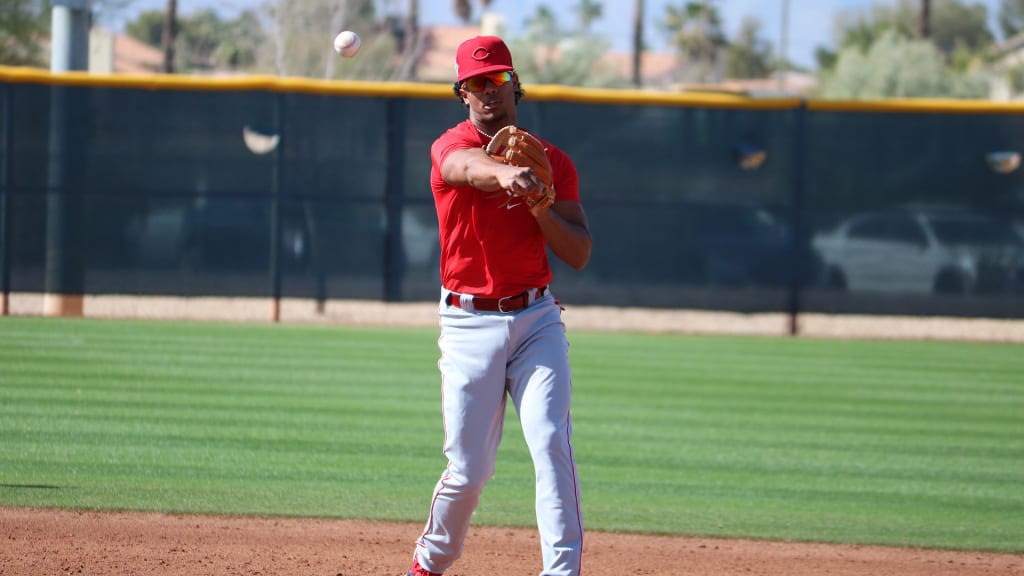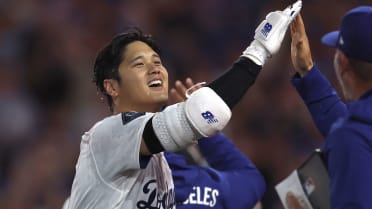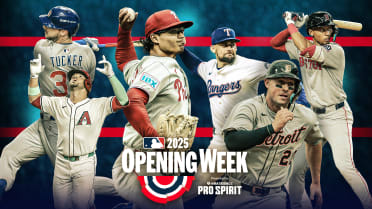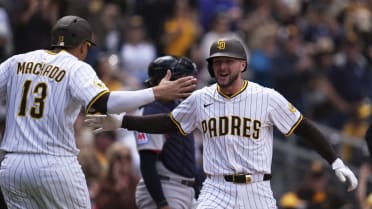Baseball America has ranked the Reds No. 7 in the publication’s annual organizational talent rankings. The ranking is 11 spots higher than a year ago and up 22 spots from 2019. And the ranking would likely be higher if the recent additions of top-level prospects were factored in.
As one of the smallest markets in baseball -- ranking 29 out of 30 clubs -- the caliber and consistency of the Minor League pipeline is as crucial to the Reds as any other organization.
The Reds are committed to creating sustainability at the Major League level by sticking to their core philosophies and adhering to data-driven processes to maximize resources. This includes targeting and acquiring players who fit the organizational structure and philosophies, getting to know the ins and outs of these players and building a trusting relationship with them through continuous communication of individualized development plans supported by technological and analytical systems.
“It’s obviously exciting,” Vice President of Player Development Shawn Pender said. “We know where we were and where we are now. But, I think you have to balance it out a little bit. I think that’s where we try to be introspective as an organization. What are we doing? How can we do it better? At the end of the day, our job is to produce big league players, so that’s what we focus in on. It’s always easier to be a better ranked organization when you have better players. And I can certainly say with great confidence that we have better players. And that’s the most important thing.”
The top priority in the amateur market -- both domestically and internationally -- is identifying and bringing in impact players. After that, the attention turns to everyday position players up the middle -- shortstops, catchers, center fielders -- and starting pitching. At times, it will also require proactively trading players under team control at the right time to maximize the return in the form of Major League players who are years away from free agency and/or prospects.

Such was the case earlier this month when the Reds traded Jesse Winker and Eugenio Suárez to the Seattle Mariners for pitchers Justin Dunn and Brandon Williamson, outfielder Jake Fraley and a player to be named. The Reds received two young, Major League-ready pieces in Dunn and Fraley while also landing a high-end prospect in Williamson. Another similar move was dealing Sonny Gray for one of Minnesota’s top prospects, Chase Petty, a 19-year-old pitcher who was the Twins’ 2021 first-round pick.
“What Nick [Krall] has said and what we’ve said as an organization is absolutely true,” Vice President/Assistant GM of Scouting and Player Development Brad Meador said. “To sustain winning, you have to be able to build from within and have a strong system. And so, rather than have the ups and downs and have to rebuild and start over … from a fan’s standpoint, it will be more exciting to do it the right way and build it from within. Because that’s the only way you can sustain it, especially in our market.”
Heading into 2022, Baseball America has listed three Reds in the Top 40 of their individual prospect rankings with Jose Barrero at No. 33, Hunter Greene No. 35 and Nick Lodolo No. 36. There are two other players in the Top 100 including shortstop Elly De La Cruz (No. 77). Unranked when signed as an amateur from the Dominican Republic in 2019, De La Cruz has rapidly ascended the rankings and could have the highest ceiling of anyone in the organization. There is also the left-handed Williamson (No. 83), who was already ranked before coming over from the Mariners.
MLB Pipeline recognizes the talent as well, putting four Reds in its Top 100 and ranking the team’s 2021 draft class -- highlighted by rising star Matt McLain -- as third-best in the National League
“I think that every time I look at it, I look at the teams ahead of us and I think we’re better than they are,” Meador said. “And that’s how we should feel because it’s our players and it’s our system, and I think it’s also important for us to believe in what we’re doing and stay true to what we think is right for the Cincinnati Reds.”
The Reds -- like many organizations -- are loaded with qualified scouts who know the game inside and out. These scouts watch players as early as in their mid-teens, track their development and bring them in if they see fit. From there, the responsibility shifts to the coaches and organizational assistants to provide the player with all the knowledge and tools at their disposal.
“Those of us that are scouts and have been scouts for a while, it’s fairly easy for us to go identify tools and athleticism and project that,” Meador said. “What’s not easy is figuring out what makes a kid tick and what he’s all about, their makeup. It’s extremely difficult, but it’s what’s most important. There’s so much that goes into it so we ask our guys to dig deeper and focus on getting to know the players as much as they can on and off the field. Where they come from, who they are, what their family’s about.”
“It’s about creating synergy between departments so that when a new player comes into the organization, how does that communication get disseminated to the player development staff?” Director of Player Development Jeremy Farrell added. “Who is this kid, why’d we take him, what are some of the things we envision him doing in the future -- establishing that preliminary conversation. And it doesn’t stop there. As the player continues through that system, there are times when our coaches will reach out to the amateur scout who signed a player that might be struggling and ask what he was doing when he was going really well to help things click again.”
That type of communication is especially essential when it comes to players from the international market, an aspect of the sport that has demanded substantially more resources in recent years. Beginning with players like Aroldis Chapman and Raisel Iglesias, and now with Barrero and Gutierrez, the Reds have had success identifying Cuban talent. But more recently, the organization has prioritized bolstering this part of its system and allocated substantial resources to expanding its footprint throughout all of Latin America and beyond.
“You can’t build your system and sustain it through the Draft only, Meador said. “You have to be able to do it through other ways, both through the international market and by acquiring players through trades and free agency. I think we’re doing a great job there.”
When it comes to the international players, an important part of that growth goes beyond the baseball field. As important as developing their baseball skills is, it’s equally if not more important to help get them accustomed to life in America.
This makes the job of Luis Bolivar, academies coordinator for the Reds’ Goodyear and Dominican Republic facilities, such a challenging but integral one. Formerly a manager at the Minor League level, Bolivar has been instrumental in assisting these youngsters with the assimilation process before they come to the states and in their first several years in the low Minors. This includes learning English, getting an all-around education and increasing their cultural awareness, among other skills. These are all aspects of the player development process.
“The one thing I’m most proud of is in the four years I’ve been in this particular position, we’ve continued to grow and emphasize our Latin American operations from a player development standpoint,” Pender said. “What we’ve gotten in the last several years has been bigger, stronger, faster and more talented kids from Venezuela and the Dominican. There’s been an influx in the makeup and the ability of the players we’ve been getting.”
With all of these talent funnels working well, the Reds are confident they have a sustainable formula for success which will produce exciting baseball in Reds Country for years to come.



